As the saying goes, Paris is always a good idea, and this couldn’t be more true, regardless of your budget.
Paris is a city that feels like it couldn’t possibly live up to the hype, until you go there and it absolutely does. Whether you’re visiting for the culture, the shopping, the history, or just the incredible food, Paris delivers in spades. There’s a reason why over 40 million people visit the French capital each year!
As you put together your itinerary, be sure to allocate plenty of time to aimless wandering. The winding streets and narrow alleyways make getting lost almost inevitable, but some of my most memorable experiences in Paris came when I ended up somewhere unexpected.
There’s so much to see in this wonderful city beyond the most famous attractions, and if you’re just following the blue dot on your smartphone, you’ll miss out on much of what makes it great! And don’t worry, bus stops and metro stations are everywhere, so it’s never hard to get back on track when you need to.
With that said, those attractions are famous for a reason, and there’s a very long list of things to see, do, and eat while you’re on your Parisian escape (I managed to put together a 6,000 word guide to the best things to do in Paris!). The Eiffel Tower and the Louvre are two of the most iconic, but there’s so much more to see. The Notre Dame Cathedral (which is due to reopen at the end of this year, in December 2024), Sainte Chapelle, and the Conciergerie are stunning, for instance, and close to each other, making it easy to stroll from one to the next.
Eating and drinking in Paris is a highlight of any visit, whether it’s at a fancy rooftop bar or a humble streetside cafe. There’s a reason why all the seats at those cafes face out onto the street: people-watching is an activity that never gets old here. If you’d prefer to look at the city skyline rather than your fellow humans, head to rooftop bars like Terass en Haute and 43 Up on the Roof for incredible drinks and even better views.
I’ve been recording every single cent I spend in the countries and cities I travel through because I want to give my readers a realistic and accurate look at how much you can expect to spend in each country you visit.
Today, it’s Paris’ turn. While prices have definitely gone up post-pandemic, as they have around much of the rest of Europe and indeed the world, there are still some bargains to be had if you hunt them out. So, let’s get started! All prices are in Euros and US dollars.
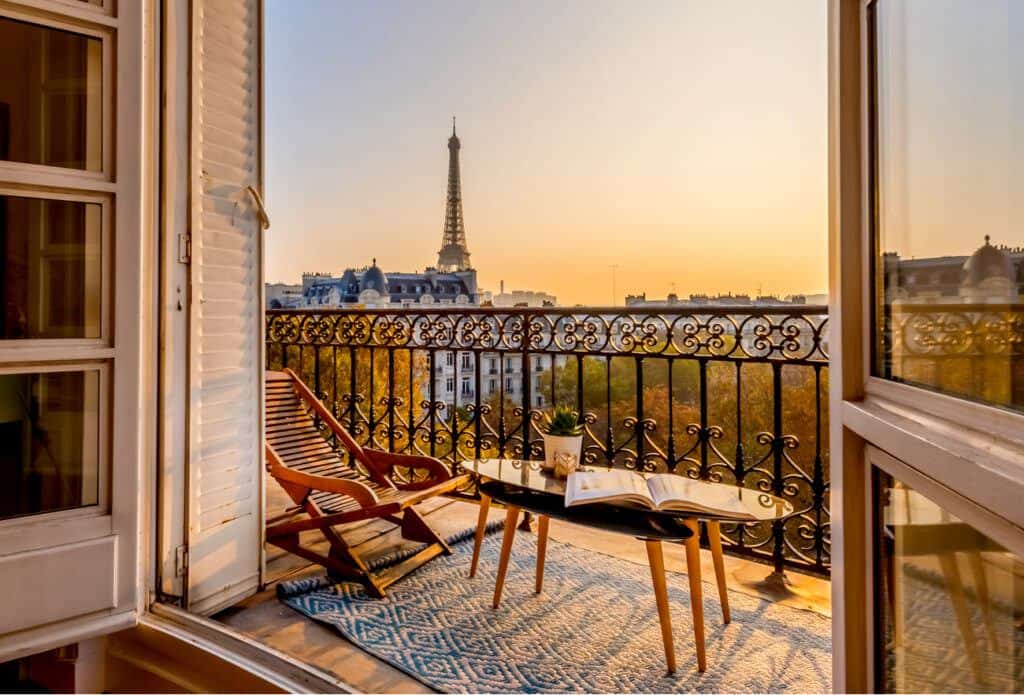
How to Save Money on the Cost of Accommodation in Paris
As always with travel, it’s possible to cut your accommodation costs down to zero if you have the time and patience to seek out an offer.
Couchsurfing exists in France — and, of course, Paris — and allows you to stay with a local for free, sleeping on their sofa and enjoying a local’s insight into life in their country. It’s not the most comfortable of living situations, but if your budget is tight, it’s worth sending out a few requests to hosts to see if anything comes of it. Take a look on the Couchsurfing site, where there are over a quarter-million hosts signed up in the city.
Housesitting is another option. This is where you’ll take care of somebody’s house for free while they’re away, and usually look after their pets, too. It’s best for long-term travellers or retirees: because you can’t pick and choose dates and destinations, you need to have a lot of flexibility as to where you go and at what time of year. If you do have that freedom, it’s a wonderful way to cut down your travel expenses, soak up some home comforts, and live like a local for a while. Trusted Housesitters is one of the best sites for getting started with housesitting.
I’m suspecting, though, that for most of you, you’re not interested in the free accommodation and just want somewhere clean, safe, and affordable to rest your head each night. If that’s the case, there are several options available for you.
The first of these are hostels. There are dozens all over the city, often close to the major attractions, and they can be one of your best options for saving money.
Hostels in Paris are on a par with the rest of major cities in Western Europe, and you can expect to spend around €50/$54 a night for a dorm bed for a well-reviewed hostel in Paris, with the price increasing to slightly about €65/$71 a night for the absolute best of the best. It’s also worth keeping an eye out for capsule-style single rooms, which are often priced about the same as a dorm bed.
When it comes to private rooms in hostels, prices are frankly all over the place. I’ve seen a few good options for under €100/$109 a night, and others that are very similar yet cost in excess of €200/$217. At that point, you’re better off opting for a good midrange hotel instead.
If you’re an older traveller and put off by the thought of nights spent in hostels, you shouldn’t be! Private rooms are usually very quiet and clean, and most hostels are modern, safe, and centrally located. They tend to have a little more personality than generic hotels, and the staff are fantastic at offering kickass travel advice. As long as you check the reviews of any hostel before booking it to make sure nobody refers to it as a party hostel, you’re all good to make a booking there.
I use HostelWorld to find the cheapest hostels, as they tend to have the greatest number of listings at the lowest prices.
And, of course, there are always hotels, which will usually start at around €150-200/$163-217 a night for a good, clean, mid-range property in a central location. I always use Booking, as they have the most accommodation options for the cheapest prices.
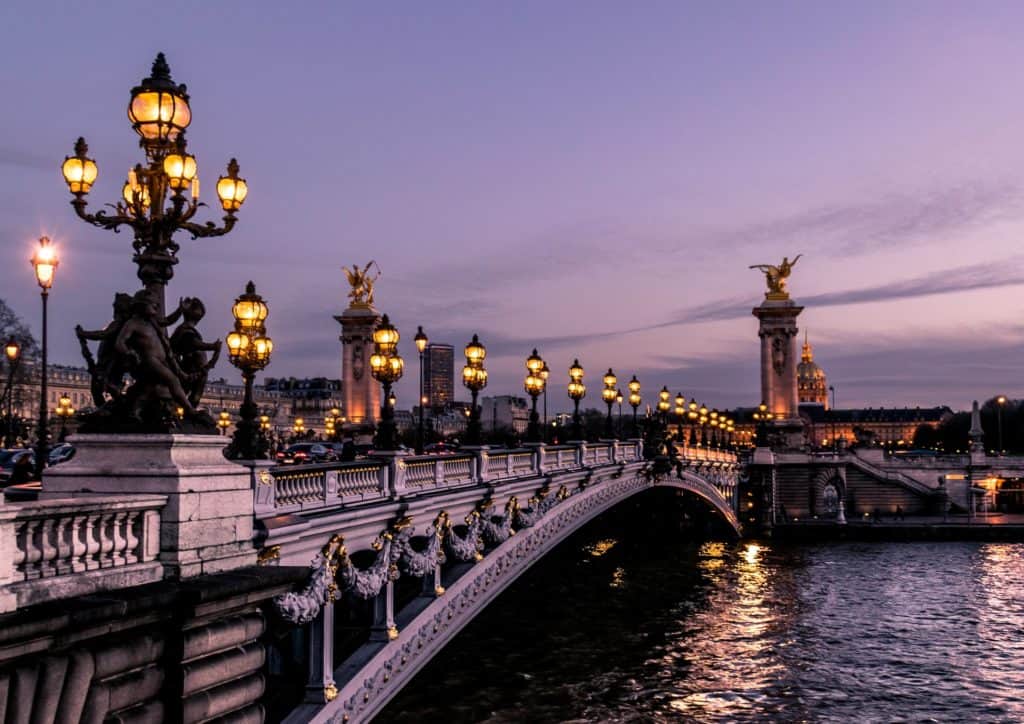
The Cost of Accommodation in Paris
Le 12 Hôtel (€197/$214 a night): Sitting on a little back street in the 8th arrondissement and sandwiched between some of the city’s biggest attractions, Le 12 is in the perfect spot to be able to walk all over the city and then return to a lovely quiet hotel at night. Only a couple of minutes from a major train and metro station and barely half an hour’s walk to the Louvre, Sacré-Cœur, Arc du Triomphe, and more, it really is a fantastic location. The rooms are clean and modern, and if you get the right one, you’ll even have a view of the Eiffel Tower to gaze out the window at while you’re enjoying your morning coffee from the in-room machine. The staff are super-friendly and helpful, and more than happy to make recommendations for some of the great local restaurants nearby.
Hôtel des Arts Montmartre (€243/$264 a night): This boutique hotel is bright, clean, and by the standards of post-pandemic accommodation in Paris, reasonably priced. I love the chunky spiral staircase that leads up to the stylish, modern rooms, many of which have a great view over the rooftops of the Montmartre district. The hotel is in the perfect spot, super-close to everything from Sacre Couer and the Moulin Rouge to a near-endless array of eateries, but on a quiet street with no road noise. Loads of little touches make the difference, from macarons on arrival to free prosecco vouchers, not to mention the delicious breakfast that’s served downstairs every day.
La Matissia– (€293/$318 a night): With a full kitchen, spacious living areas, and bright rooms, these apartment style suites make you feel more like you’re living in the City of Lights than just visiting for a few days. The location is ideal, close to the Gard du Nord and with easy pedestrian or metro access to the city without having to deal with the accompanying noise. It’s also close to some of the cultural hubs of the Paris, including La Cigale concert hall and the Pompidou Centre. There’s a coffee shop on site, along with complimentary water, tea, coffee, and snacks, and several excellent restaurants nearby.
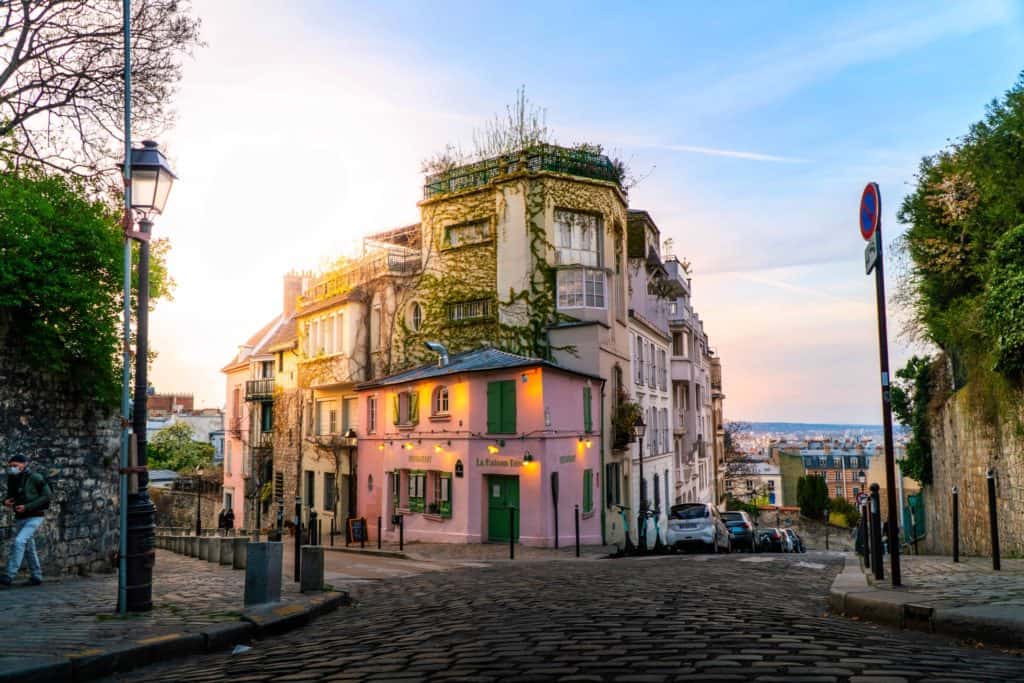
The Cost of Transportation in Paris
Paris is one of the major airport hubs in the world, making travel to and from simple and cheap. If you’re coming from the UK or elsewhere in Western Europe, consider the train as well: it can often be just as quick door to door, and a lot more comfortable! Base prices tend to be higher, but by the time you add checked baggage to your flight, there’s often not a lot in it.
- Round trip from London (flight) – €66/$72
- Round trip from London (Eurostar) – €151/$164
- Round trip from Rome- €59/$64
- Round trip from NYC- €429/$466
- Round trip from Amsterdam- €133/$144
- Round trip from Hong Kong- €463/$503
Paris is very walkable, but if you can’t or don’t care to walk to your destination, the public transportation system is effective, comprehensive, and cheap.
The metro is really does go almost everywhere you might want to visit as a tourist, with 16 different lines and nearly 300 stations. For a single ticket in zone 1-3, expect to pay €2.15/$2.35, or you can use a contactless card or phone app and get a 10-pack of tickets for €17.35/$19. The card is €2/$2.20, the app is free to install. Tickets are available from machines and counters at metro stations, as well as many newsagents and convenience stores.
The Paris Visite pass gives unlimited travel across all forms of transport throughout the city. Prices start at €13.95/$15.20 and can be purchased for 1, 2, 3, or 5 consecutive days. There are two different options, a cheaper zone 1-3 ticket, and a zone 1-5 option that includes outer suburbs, Versailles, and both Paris airports. If you choose access to all zones for 5 days, you’ll pay €76.25/$83: this is the ticket I bought, and I got more than my money’s worth.
The RER train network, Transiliens (regional trains), and trams are also a part of the city’s transport network, and are covered by the unlimited Paris Visite pass. The RER and Transilient share many stations, making it easy to connect as needed.
Buses are everywhere in Paris, and sometimes they’re faster than making multiple changes on the metro. They have better views as well! There are 64 different bus lines which make it easy to get where you’re going during the daytime, and when the sun sets, the Noctilien night bus service takes over. It has 47 stations and runs from 12:30 to 5:30 am. The ticketing system is the same as for the metro and trains, and is again included in the Paris Visite pass.
Cycling is a fantastic way to get around in many European cities, and Paris is no exception. Velib’ Metropole is the most popular and convenient option for renting a self-service bike, with docks scattered across the city. I’ve used it myself and on a sunny spring afternoon, it was an absolute delight. Both pedal and electric bikes are available, so go for whichever suits the distances you plan to cover (and your energy levels!).
You can rent a standard pedal bike for 45 minutes for €3/$3.25, or get a day pass for €5/$5.50 that gives unlimited rides of up to half an hour each and then €1/$1.10 per half hour after that. Electric bikes cost €10/$11 for the day pass, with five free rides of up to 45 minutes each. After that, it’s €2/$2.20 per 45 minute trip, and the same per extra half hour.
Keep in mind that Paris is a busy metropolis with unnerving one-way streets and hectic traffic to match. I may have accidentally started going the wrong way down a narrow one-way street a couple of times myself! If you’re not experienced in urban cycling, it might be safe to stick to park paths like those in the Bois de Boulogne or Bois De Vincennes instead!

How Much Does it Cost to Eat in Paris?
When it comes to eating in Paris, don’t worry, it’s not all croissants and escargot–although if it were, it wouldn’t be the worst thing in the world! Parisian cuisine is rightly famous around the world. Meals are thought of as a celebration rather than an obligation, and lunches in particular are rarely viewed as something to do in a hurry. Fresh, natural ingredients dominate, and are used to create dishes that burst with flavour. While rich, heavy meals are often associated with French cuisine, there are also plenty of lighter, simple foods on offer as well.
I’d be amazed if you weren’t already familiar with baguettes, long loaves of bread that are either cut up to accompany a restaurant meal or layered with meats and cheeses and treated like a sandwich elsewhere in the world. Baked fresh each day and found pretty much everywhere, these delicious staples typically cost around €4-6/$4.40-6.60, depending on what’s inside them.
Macarons are small, colourful pastries shaped like a cookie: you’ll find them in most bakeries, and they’ll set you back €2-4/$2.20-4.40 depending on how fancy they (and the bakery) are. Eclairs are another French dish that’s spread around the world: they usually come filled with cream, but somehow aren’t quite as heavy to eat as you might expect. Expect to pay €2-3/$2.20-3.30 for a standard version from a neighbourhood bakery, and up to €6/$6.60 for a gourmet high-end version.
A typical breakfast consists of a baguette with jam (€2.50/$2.75) or a croissant (even the tastiest ones are only €1-2/$1.10-2.20), a coffee, and a walk — it’s usually consumed on the move. Parisians are good at walking and eating in the morning, perhaps because when they dine-in, they pay for their seat. A to-go espresso costs around €1.50/$1.65, but you’ll need to add an extra euro to have it while seated inside a cafe, and another euro to drink it at an outside table.
Lunch is a big deal here, often lasting two or three hours, and will typically be your most expensive meal. A good way to save a bit of money and still get to enjoy authentic and varied French cuisine is to look for restaurants advertising a formule or menu du jour: these set three-course meals will typically set you back €20-30/$22-33. That might include a drink, but not always. Expect to see things like French onion soup, coq au vin, ratatouille, and crème brûlée on the menu, although there are many other options as well depending on the season and the restaurant.
Dinner is often less fussy and slightly less expensive, at around €20/$22 per meal, not including a drink. Steak frites are a common menu item, while duck confit is more of a treat (and rarity) due to the intensive preparation — I’m talking days of marinating. But if you can find a good one, you won’t regret it!
When it’s time to drink (and trust me, there will be many opportunities to do so in Paris), wine is the most popular and cheapest option. Given how much of it is produced in France, and how good it is, that’s hardly a surprise.
At the grocery store, a bottle of good table wine costs as little as €3-5/$3.30-5.50, while a bottle or carafe of something similar in a restaurant might set you back €10-15/$11-16.50 or more. Cocktails cost about the same, while pints of beer in a bar usually starting at €6-8/$6.60-9. Keep in mind that happy hour is a big thing here, though: from about 6-8 pm, most bars and restaurants in the city offer deals on both food and alcohol.
If you wish to cook your own meal, you won’t want to skip over the local markets. In Paris, you can find a market on nearly any given day selling fresh goods from vegetables and meat to cheese and olive oil. The most famous market in Paris is Marché des Enfants Rouges which has been trading staples since 1628. You can get a pound of various fruits and veggies for €2-€3/$2.20-3.30 and a pound of salmon or cod might set you back approximately €8/$8.70.
Craving a quick meal? Street food is a great way to experience the city without the high price. Falafel, kebabs, and crepes are common options: easily-accessible and highly-regarded, you’ll typically pay around €5-8/$5.50-8.80.

The Cost of Activities in Paris
Wandering in Paris is an absolute delight, especially in spring and early summer when the city just feels alive. You don’t even need to have a destination in mind to enjoy it, but if you do, you’ll find that many of the city’s attractions are within walking distance of each other, and there’s plenty to see along the way.
Arguably the most famous street in the world, a stroll along the bustling Champs-Elysees should be on every itinerary. High-end shopping, elegant cafes, stunning buildings, and endless people-watching–it’s all there on this famous Parisian thoroughfare. The walking and people-watching is free, but little else is!
If you are a lover of books and the arts, you’ll want to get lost in the Centre Georges Pompidou, a massive library and home to one of the top modern art museums in the world, Musée National d’Art Moderne. Tickets cost €15/$16.50, with an extra €4.50/$5 to join a guided tour if you want one.
As much as there is to see above ground, there’s plenty to see below the city streets as well. The famous catacombs have nearly a mile of tunnels, filled with the bones of millions of people that were moved from the city’s overcrowded cemeteries in the late eighteenth and early nineteenth centuries. It’s an eerie yet fascinating experience. Admission costs €29/$31.50 (including an audio guide) for adults. Note that tickets can only be bought up to a week in advance, and they’re very popular: if you can’t get one in advance, you can try your luck at the ticket office, but prepare for a lengthy wait.
Of course, that only scratches the surface of what’s on offer in Paris: from the Louvre to the Eiffel Tower, the Moulin Rouge to Sacré-Coeur, you could spend months in the city and still not run out of world-class attractions. Note that for many of the biggest sites in the city, there can be long lines if you just show up on the day to buy a ticket: get one in advance if you can, or plan your itinerary accordingly!
- Louvre Skip the Line Access Private Guided Tour– €128.50/$139
- Paris Sightseeing Guided Bike Tour– €42.50/$46
- Bateaux Parisiens Seine River Gourmet Dinner & Sightseeing Cruise– €127/$138
- Eiffel Tower Skip the Line Ticket – €70/$76
If you have the time and plan to visit several major attractions in the city, the Paris Pass can save you money. It includes admission to more than 60 attractions including the Palace of Versailles and Arc de Triomphe, Louvre Museum, Pompidou Centre, and more. You can choose anything from 2-6 days validity, and get a hop-on, hop-off bus tour and discounts at various restaurants thrown in as well. Prices start at €159/$172.

The Cost of Travel Insurance in Paris
If you’ve read any other posts on Never Ending Footsteps, you’ll know that I’m a great believer in travelling with travel insurance. I’ve seen far too many Go Fund Me campaigns from destitute backpackers that are unexpectedly stranded in a foreign country after a scooter accident/being attacked/breaking a leg with no way of getting home or paying for their healthcare. These costs can quickly land you with a six-figure bill to pay at the end of it.
In short, if you can’t afford travel insurance, you can’t afford to travel.
Travel insurance will cover you if your flight is cancelled and you need to book a new one, if your luggage gets lost and you need to replace your belongings, if you suddenly get struck down by appendicitis and have to be hospitalised, or discover a family member has died and you need to get home immediately. If you fall seriously ill, your insurance will cover the costs to fly you home to receive medical treatment.
I use SafetyWing as my travel insurance provider, and recommend them for trips to Paris. Firstly, they’re one of the few companies out there who will actually cover you if you contract COVID-19. On top of that, they provide worldwide coverage, don’t require you to have a return ticket, and even allow you to buy coverage after you’ve left home. If you’re on a long-term trip, you can pay monthly instead of up-front, and can cancel at any time. Finally, they’re more affordable than the competition, and have a clear, easy-to-understand pricing structure, which is always appreciated.
With SafetyWing, you’ll pay $1.50 a day for travel insurance.
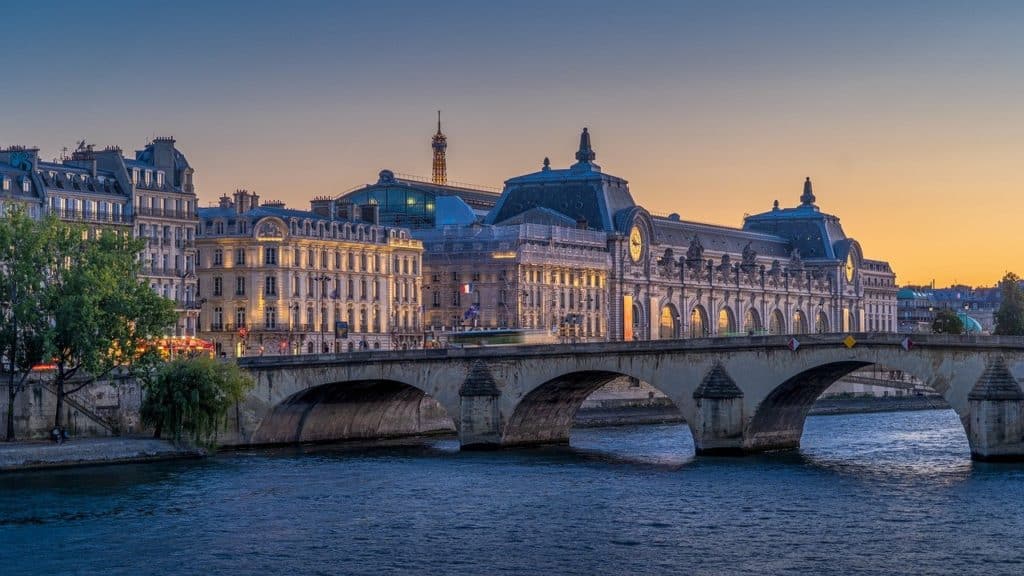
How Much Does it Cost to Travel in Paris?
Accommodation: €245/$265 per day between two (€122.50/$132.50 each)
Transportation: €15.50/$17 per day
Food and drink: €60/$65 per day
Activities: €64/$69 per day
Total amount spent per person per day: €262/$284
Related Articles on France
🇫🇷 23 Best Things to Do in Paris: The Ultimate Guide
🏖 Top Things to Do in Nice
⚛️ A Private Tour of CERN’s Large Hadron Collider

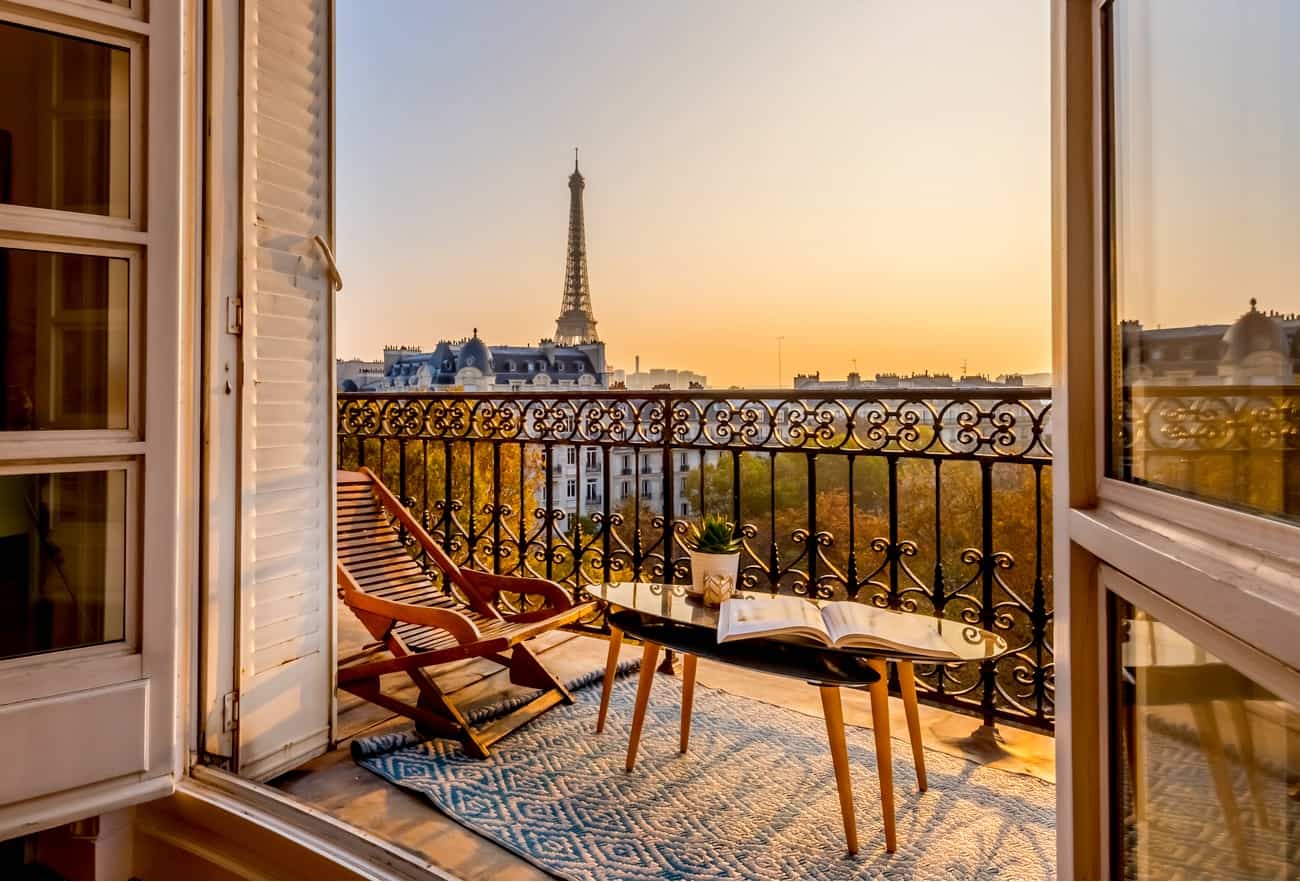






No Comment